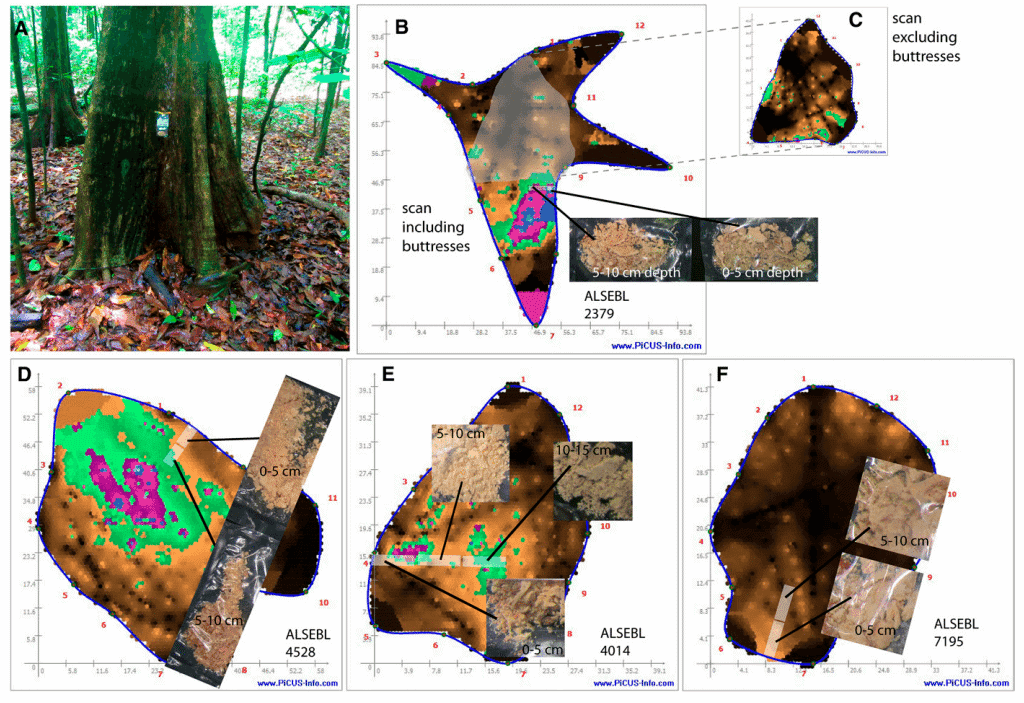Like all living things, trees also suffer from aging, disease, and all-around decay. Unlike most organisms, however, trees are very secretive about their health. Even to the trained eye, it can be very difficult to assess whether a tree is old or in a bad shape, as a thick bark can conceal even the most advanced decay on the inside. Luckily, there are ways to probe a tree’s health without having to physically retrieve samples or make any cuts. You only have to listen.

Alseis blackiana trees on Barro Colorado Island, Panama. Credit: Applications in Plant Sciences
One such method is called sonic tomography. It allows arborists to more accurately inspect the safety of hazardous trees and reveal the quality of wood. First, a dozen or more sensors are placed around a tree’s trunk, then sound impulses are transmitted remotely to be received by the sensors. A special software calculates the measured values to make a 3-D picture of the response because sound travels differently through parts of the tree. The longer it takes for a sound wave to travel through the trunk, the more decayed it is. Damaged areas appear in red, somewhat damaged in yellow and intact in green.
Over the years, sonic tomography has proven very useful. However, one of its limitations is that it can only accurately gauge the health of trees which have cylindrical trunks. For many intents and purposes, that’s just fine but what if you need to study trees with irregular-shaped trunk? Indeed, we can imagine such a demand given irregular-shaped tree are widely found in the tropics and a lot of researchers are interested in measuring their health. Tropical forests are home to 96% of the world’s tree diversity and about 25% of terrestrial carbon, compared to the roughly 10% of carbon held in temperate forests, says Greg Gilbert, Professor and Chair of the Department of Environmental Studies at the University of California, Santa Cruz.
Gilbert and colleagues reported in the journal Applications in Plant Sciences how they went to Panama and examined 173 species in the rainforest. Overall, the team inspected1,800 trees with sonic tomography, despite many of these trees had an irregularly shaped trunk. Apparently, using more sensors and a better placement to account for the non-cylindrical shape of the trees does the job.
“While the effectiveness of tomography to detect wood decay has been well established for use on regularly shaped trees, the expanded use of this technology for a diversity of tropical tree species with highly irregular trunks, buttresses, prop roots, and different patterns of wood production would benefit from continued efforts at validation. This can be done by taking advantage of opportunities to scan trees that are to be felled, and following up with postcutting inspection of wood decay patterns within the trunk (Gilbert and Smiley, 2004). Additionally, minimally invasive extraction of wood cores or wood material, as we have done here, can be used to quickly evaluate patterns of wood integrity and decay associated with the patterns shown in the PiCUS 3 tomograms. As standardized approaches to tomography are used on a greater diversity of tree species under different growing conditions, the utility of tomography as a research tool will continue to grow,” the researchers concluded.
NOW READ: Do trees sleep, too?






